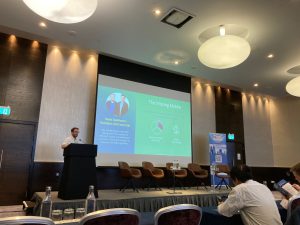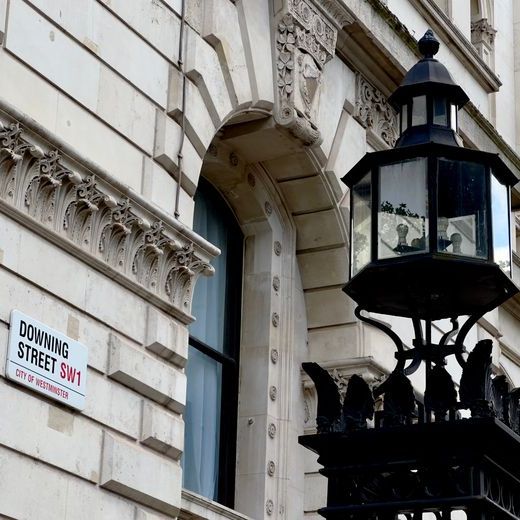I recently had the privilege of opening this year’s FSTech Future of Fintech conference with a talk on the role of commercial lenders in responding to the risks and rewards of climate change.
We’ve all seen and felt the impact of climate change, from the extreme heatwaves we experienced this summer, to the extensive flooding and storm damage suffered by many communities throughout the country in recent months. Regular news stories remind us that this is a global issue, with devastating wildfires in the US and Southern Europe, and catastrophic flooding in Asia.
Regulators the world over have begun to highlight the risks that climate change presents to financial stability, and the impact of both physical and transitional risks on the creditworthiness of even the most resilient businesses.
But climate change also represents possibly the most significant opportunity for financial services in a generation. Research suggests that the capital spending necessary to achieve international climate goals could be as much as $9.2 trillion globally every year between now and 2050.
To date, OakNorth Bank has lent over £7.5 billion to businesses across the UK, and we’re supporting a number of these businesses with their transition to a greener economy. We’ve been net zero since 2019 through our operational scope 1 and 2 carbon emissions, and have set ourselves a target to achieve net zero by 2035 across all our scope 3 emissions – including those that we finance – which you can read more about in our latest annual report.
Industries that generate the largest sources of the world’s greenhouse gas emissions include sectors such as energy, manufacturing, agriculture, construction and transport. Some lenders may think that if they don’t operate in these sectors then climate change won’t affect their portfolios and is therefore a non-issue for them. But at OakNorth, we know that even though we’ve never lent to oil and gas businesses and we don’t have an agriculture book, the physical and particularly transitional risks of climate change will have a ripple effect across the supply chain, which will most definitely impact us.
Taking just one example, the rapid emergence of electric vehicles is having a dramatic impact on the automotive sector, but even if you don’t lend directly to car manufacturers, the effects on the broader value chain cannot be ignored. There are tens of thousands of new and used car dealerships needing to adapt, and auto-repair and servicing centres that need new skills and training, or responses to the shift in maintenance requirements of electric vehicles. Manufacturers themselves are impacted by fossil fuel prices, the cost of raw materials such as rare earth metals for batteries or the supply of microchips, and potential policy changes like carbon taxes influencing consumer demand.
Commercial lenders need to have a loan-level understanding of the borrowers in their portfolio and take a forward-looking view of how these businesses could be impacted by climate-related variables. At OakNorth, we don’t have an automotive portfolio in the traditional sense, but we certainly have borrowers who will be impacted by the move to electric vehicles, so we’re having to think about how transition risks playing out in the automotive sector will impact them and their creditworthiness.

Matt Bullivant speaking at the FSTech Future of Fintech conference
But this example also demonstrates where opportunities arise for us to support customers with their transition, such as those coming to us for finance to install electric vehicle charging points, or factoring in lower carbon features in residential property developments to name just a few.
We’ve been working for the last few years with climate experts, academics, credit scientists and technologists on establishing the OakNorth Climate Impact Framework for analysing climate risk and exposures, and measuring and understanding financed emissions, which is data that is incredibly hard to source in commercial loan books.
We apply detailed industry models we’ve created for 273 different subsectors to our customer financials and the unique climate transition pathways for each. Then we layer across transition scenarios produced by the Network for Greening the Financial System to model the impact of climate change across broadly three types of eventuality:
- Orderly transitions, where we make deep emissions cuts now to achieve net zero by 2050, keeping warming to within 1.5 degrees or at least under 2 degrees by the end of the century
- Disorderly transitions, where it takes us a little longer to get our act together, and we make necessary cuts to hit net zero late on closer to 2050
- Or a “hothouse world”, where none of us wants to be, and we do nothing beyond current commitments and allow temperatures to rise unabated to 3 or 4 degrees above pre-industrial levels
We look at all our lending at this granular level, mapping out our portfolio to see where our most vulnerable credits lie, so we can prioritise in the right order, and identify opportunities to support borrowers in their transition to the green economy.
For OakNorth, this isn’t about turning off finance or stopping lending to more climate-exposed businesses. It’s about helping borrowers and businesses think about the changes they can and should be making now to future-proof their business models and supporting them to achieve this wherever we’re able to.
We’re still in the early stages of our journey, but there are a few areas we’ve identified that could be helpful for other lenders to be thinking about as they embark on the journey of their own:
- Get your data organised and identify, measure, and manage climate risk, which should be fully integrated into risk management frameworks, from setting risk appetite through to risk identification and mitigation.
- Data around carbon emissions is not yet complete and has limited history, so scenario analysis will need to evolve as data improves. Consider a broad range of granular, forward-looking scenarios to assess how to meet your risk management objectives and wider climate change targets.
- Lenders should have clear governance, escalation, and decision-making framework for climate risks, including someone at Board level who has responsibility for this.
- It’s essential to build climate-confident teams. Coach your front line to have transition-related conversations with borrowers, providing them with the right questions to ask for different industries and sub-sectors. If you want to be trusted advisors to the businesses you lend to, you need to work with your borrowers to help them understand their climate sensitivity and vulnerability, and how that may impact their creditworthiness.
It’s an incredibly exciting time for the banking sector, and commercial lenders have an essential role in supporting the green transition. We can all play our part, and if we do, it’ll not only be better for the planet, but for our customers, our business, and the wider economy too.
by Matt Bullivant, Director of ESG Strategy


